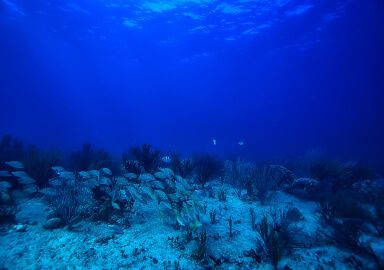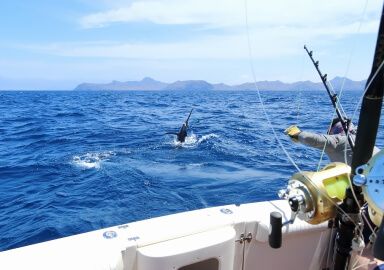Wrasse
Colorful, curious, and widely varied, wrasse are a favorite among anglers who enjoy reef fishing and vibrant marine species.
View 2 listings
2
listings
–
price starting from
2
countries
Where and When?
Wrasse inhabit reef systems and rocky coastlines in oceans worldwide, thriving in areas with abundant cover and prey. They are particularly common in the Indo-Pacific region, the Mediterranean, and the Atlantic coasts of Europe. Prime fishing destinations include the Great Barrier Reef in Australia, the Mediterranean's rocky shores, and the temperate waters around the British Isles.
Wrasse are most active during daylight hours, especially early morning and late afternoon. These fish are year-round residents in their habitats, but warmer months tend to bring more activity as water temperatures rise, making them easier to locate.
About Wrasse
Wrasse are a diverse family of fish (Labridae) found in tropical and temperate oceans around the world. Known for their bright, eye-catching colors and bold personalities, they are a delight for anglers and divers alike. With over 600 species, wrasse come in many shapes and sizes, but most share an elongated body, pointed snout, and thick lips.
Popular species like the cleaner wrasse, humphead wrasse, and ballan wrasse are renowned for their striking patterns and fascinating behaviors. Some wrasse species form mutualistic relationships, cleaning other fish of parasites, while others are territorial predators that hunt crustaceans and mollusks among coral reefs and rocky crevices.
Most wrasse range in size from a few inches to a foot in length, but giants like the humphead wrasse can grow over 7 feet and weigh more than 400 pounds. Many wrasse are long-lived, with some species surviving decades. Conservation efforts are vital for larger species, such as the humphead wrasse, which is threatened due to overfishing and habitat loss.
How to Catch?
You can catch a wrasse nearly all over the world, from Ireland to the Maldives, and of course different locations and species require different approaches. But all in all most wrasse are caught inshore, both from boats and from the coast. Wrasse often lurk in rocky crevices and reefs, so fishing near underwater structures is key. These fish are not shy and will readily strike bait or lures presented close to their hiding spots.
Bottom fishing is the traditional method, using natural bait such as ragworms, crabs, or prawns. Small hooks and a simple drop shot or ledger rig work well, allowing the bait to rest near the bottom where wrasse feed. Be prepared for sharp bites, as wrasse are quick to strike and can retreat into cover if not hooked firmly.
However, many anglers who tried spinning or jigging for wrasse report that artificial lures, such as soft plastics on a Texas rig, can be even more efficient. Start with presenting smaller jigs slowly near rocky outcrops, and adjust your approach as necessary. Fly fishing for wrasse is an emerging trend, using weighted flies that mimic shrimp or small fish. Local knowledge, readily provided by captains of charter boats and professional guides, is essential for finding and landing the exotic kinds of wrasse.
Wrasse are known for their spirited fights and quick runs, so sturdy tackle is recommended, especially when fishing in areas with jagged rocks or dense coral that can fray lines. Due to their vibrant appearance and lively nature, wrasse are a delight to catch and release, though if the rules don’t prevent it, it never hurts to keep a few for your table. Whether you’re targeting colorful reef dwellers or the massive humphead wrasse, these fascinating fish promise excitement and adventure for anglers exploring the world's coastal waters.






